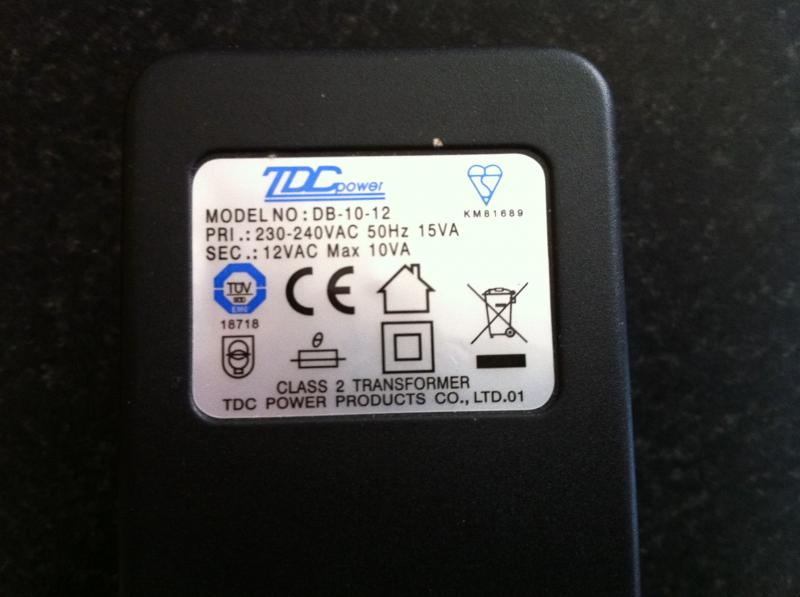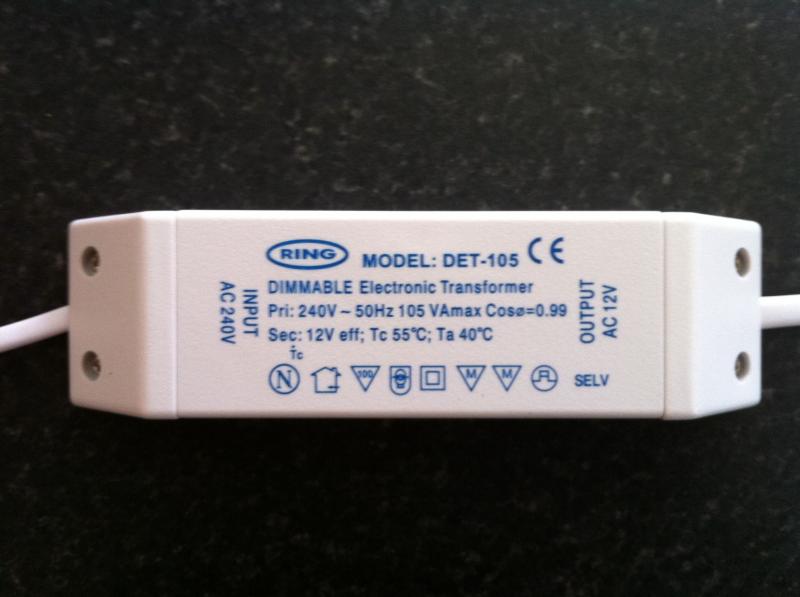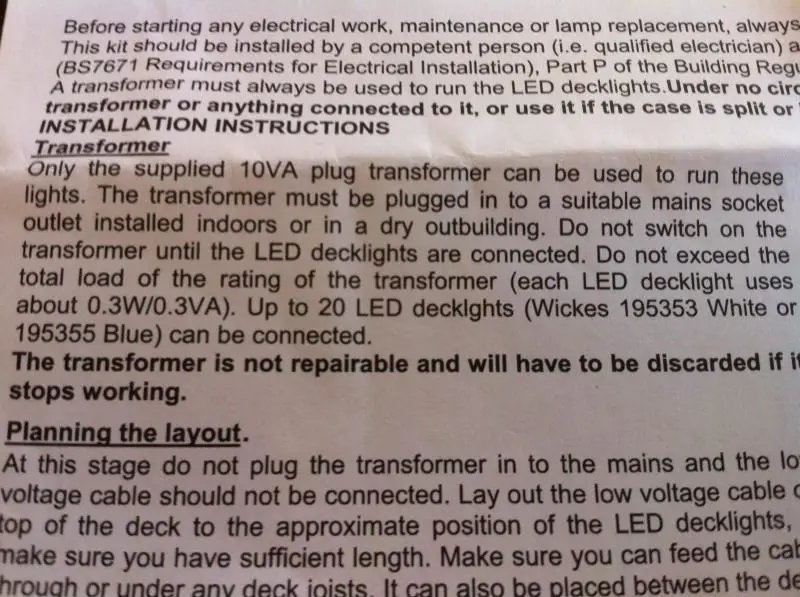Hi guys,
I have 2 x Wickes decking light kits, both containing 8 LED bulbs, and a 230-240VAC 50Hz 15VA wall wart transformer.
I would like to use these as kitchen plinth lights instead, and run all 16 off one transformer wired into my lighting circuit.
I have a spare 12v transformer, and was wondering if this would be ok to use.
The transformer is a RING : DET-105 240V ~ 50Hz 105 VA max.
Cheers,
Adam
I have 2 x Wickes decking light kits, both containing 8 LED bulbs, and a 230-240VAC 50Hz 15VA wall wart transformer.
I would like to use these as kitchen plinth lights instead, and run all 16 off one transformer wired into my lighting circuit.
I have a spare 12v transformer, and was wondering if this would be ok to use.
The transformer is a RING : DET-105 240V ~ 50Hz 105 VA max.
Cheers,
Adam




